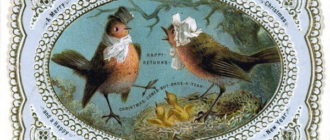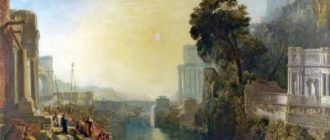
Exaltation of the Cross of the Lord by Rubens – a huge triptych that embodies the aesthetics of the Baroque
The Exaltation of the Cross of the Lord is a painting by Pieter Paul Rubens, completed in 1610. A magnificent triptych reveals the theme of the crucifixion from a new angle. Traditionally, artists depicted the moment when the cross has already been raised.
Rubens’ work makes the viewer witness the execution process and evokes stronger emotions. The noble figure of Christ is a key element in the central part of the triptych. It seems so heavy and significant that nine executioners lift the cross at once. The side panel depicts the Mother of God and John the Baptist, and on the other side – prisoners who are also going to be executed.
Author: Peter Paul Rubens (1577-1640).
Year of writing: 1610.
Size: central panel 460 x 340 cm, side panels – 460 × 150 cm.
Style: Baroque.
Genre: Religious scene.
Technique: Oil painting.
Material: Wood.
Location: Cathedral of Our Lady of Antwerp in Belgium.
Peter Paul Rubens is one of the main painters of the Baroque era.
He wrote The Exaltation of the Cross of the Lord shortly after completing his studies in Italy. The artist returned to his homeland at an opportune moment: Flanders and the Northern Netherlands signed a truce, after which they began to restore the destroyed temples.
In 1609, a wealthy merchant and philanthropist ordered Rubens an altar triptych to donate to the Church of St. Walburga. The brilliant painter coped with this work in less than two years – incredibly quickly, given the size of the triptych.
Rubens tried to write “The Exaltation of the Cross of the Lord” in such a way as to declare himself as an accomplished artist. The influence of the Italian classics is felt in this work. The ideal body of Christ is reminiscent of the frescoes by Michelangelo Buonarroti, a group of tense athletic men indicates an acquaintance with Tintoretto Jacopo, and the diagonal composition of the central part is solved as in Caravaggio’s Place in the Coffin (Michelangelo Merisi da Caravaggio).
But in general, the triptych is the work of a mature master. The original style of Rubens is read in the detailed elaboration of figures and draperies, in a special color, in a unique play of light and shadow. The finished work was placed above the altar, where it could be seen from afar.
The triptych made a stunning impression and quickly glorified the author. During the Napoleonic wars, this work was taken to Paris, but returned a few years later. The Church of St. Walburga was destroyed by that time, so the “Exaltation of the Lord’s Cross” was placed on the altar wall of the Cathedral in Antwerp. There she is kept at the present time along with other paintings by Rubens.






